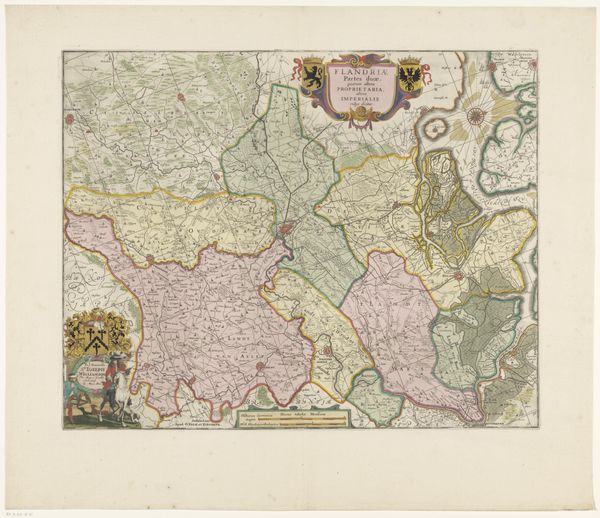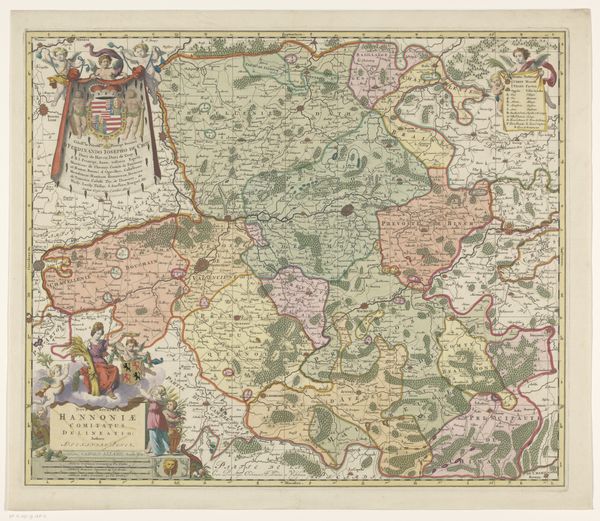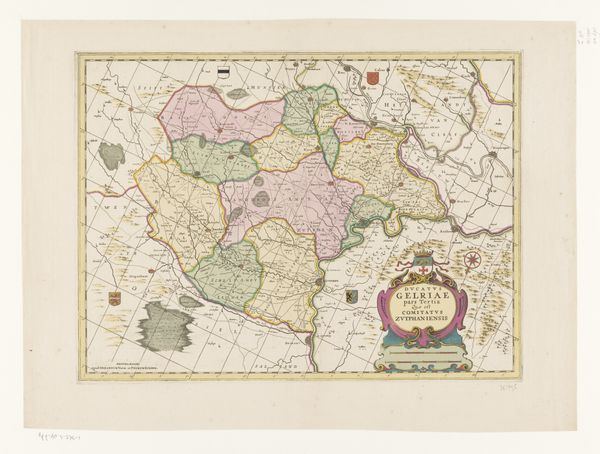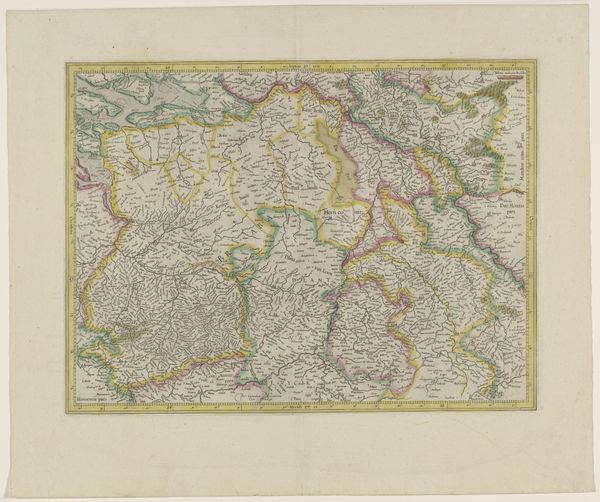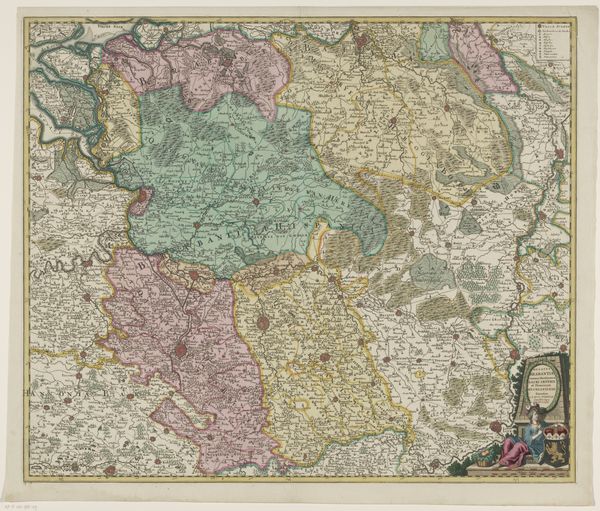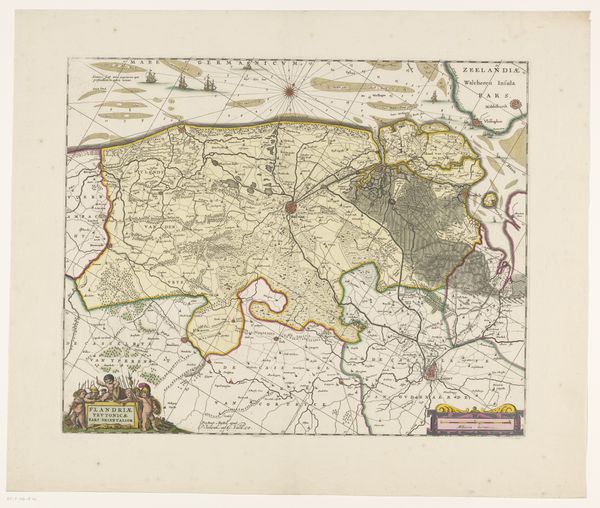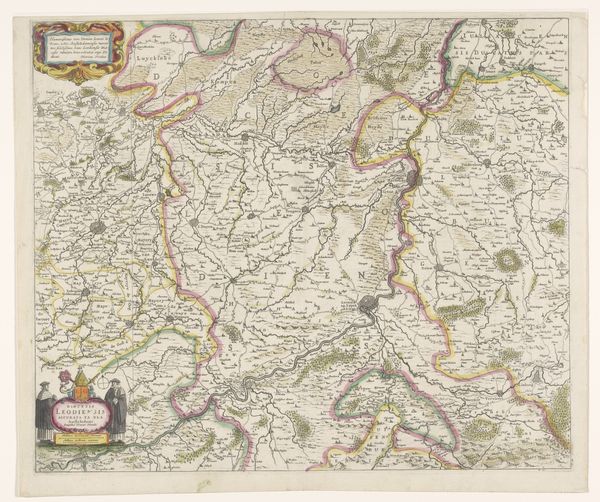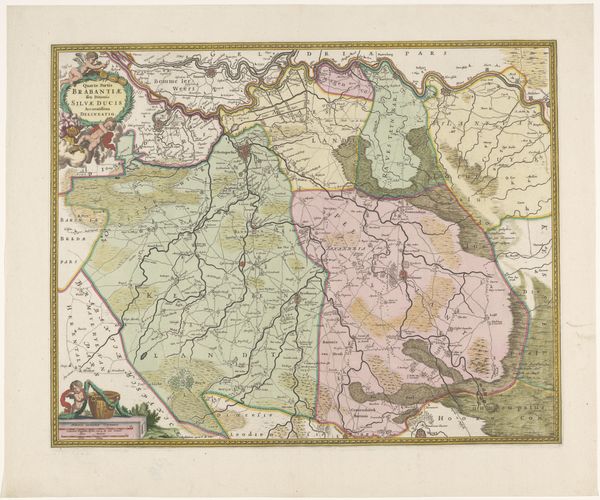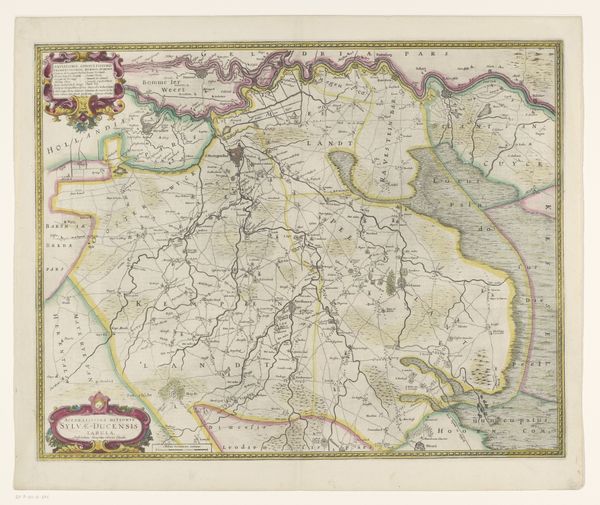
drawing, print, paper, engraving
#
drawing
#
water colours
#
baroque
# print
#
landscape
#
paper
#
genre-painting
#
engraving
#
botanical art
#
watercolor
Dimensions: height 467 mm, width 583 mm
Copyright: Rijks Museum: Open Domain
Curator: Take a look at this fascinating cartographic print, "Kaart van Henegouwen," or "Map of Hainaut," dating roughly from 1677 to 1720. It’s rendered with drawing, engraving and watercolor. Editor: The first thing that strikes me is the density of detail. Look at the way the land is meticulously represented, not as abstract space, but as something teeming with resources. Curator: Absolutely. Maps in this era were not just geographical tools, but political statements. Examining who commissioned this map, and what interests they served is critical. Hainaut has seen many changes in rulership over the centuries, by examining its symbolism we can see how this work played a role. Editor: I’m more intrigued by the material choices – the print itself, the paper, the application of watercolor. It elevates this piece beyond simple documentation. You can feel the labour that goes into something like this – the etching, the coloring by hand. Each of these represents somebody's work, how were they commissioned and compensated? Curator: Indeed, the hand-coloring adds a layer of artisanal value. How do the aesthetics influence perceptions of legitimacy or ownership for its intended viewers, and how might our understanding differ today, especially given conversations about the region's cultural significance? Editor: Right, because we tend to see things in terms of industrialization and mass production now, we might forget how much each sheet meant to somebody who labored on it. I mean, was there a division of labor? Curator: Those considerations are vital. What's compelling is how the work exists between practicality, as a document reflecting evolving power relations, and beauty, elevating its status through careful craftsmanship. We should investigate it in connection to larger colonial enterprises, thinking about whose lands and resources were being mapped, extracted, and controlled. Editor: Precisely, understanding production as itself part of larger historical and cultural narratives. How were the makers trained? Who provided their materials? Let's remember that someone somewhere worked hard on the resources they used. Curator: Thank you, that exploration has given me more insight in regard to cultural appropriation as expressed by a single artwork. Editor: Yes, focusing on those aspects helps us really question and deepen our overall evaluation and comprehension.
Comments
No comments
Be the first to comment and join the conversation on the ultimate creative platform.


